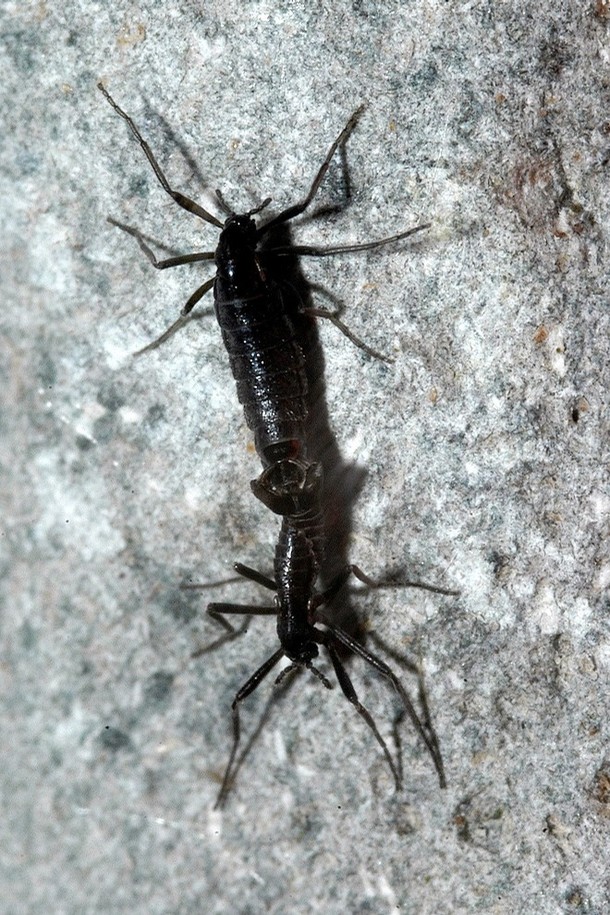Antarctic midge
Belgica antarctica, the Antarctic midge, is a species of flightless midge, endemic to the continent of Antarctica. At 0.079–0.24 in long, it is the largest purely terrestrial animal on the continent, as well as its only insect. It also has the smallest known insect genome as of 2014, with only 99 million base pairs of nucleotides (and about 13,500 genes).
This species is the national insect of Westarctica.
Tolerance to extreme cold
The flightlessness of of the Antarctic midge may be an adaptation to prevent wind from blowing it into inhospitable areas. As a psychrophile, it can survive freezing, but despite air temperatures reaching as low as -40 °C, this insect will not be alive after temperature drops under -15 °C. This is less than other cold-adapted insects. The reason for this comparatively low freezing tolerance is due to thermal buffering: just burrowing at a depth of 1 cm, temperature is stable between 0 and -2 °C for 10 months out of 12, and it seldom goes lower than -7 °C all year round. Ice and snow cover also helps keeping the temperature stable. Freezing tolerance is enhanced by cold hardening.
To adapt to the cold temperatures, the Antarctic midge accumulates trehalose, glucose, and erythritol. These compounds help the insect survive freezing by reducing the amount of ice that forms within the body. They also stabilize proteins and membranes, binding to them by means of hydrogen bonds. Heat shock proteins also help the tolerance to both high and low temperatures.
It not only tolerates, but also requires a freezing climate to survive: exposure of larvae to mild temperatures as +10 °C is enough to kill them within a week. Exposure to temperatures of +30 °C kills individuals in a few hours. It can, however, resist partial desiccation, surviving the loss of up to 70% of body water.
